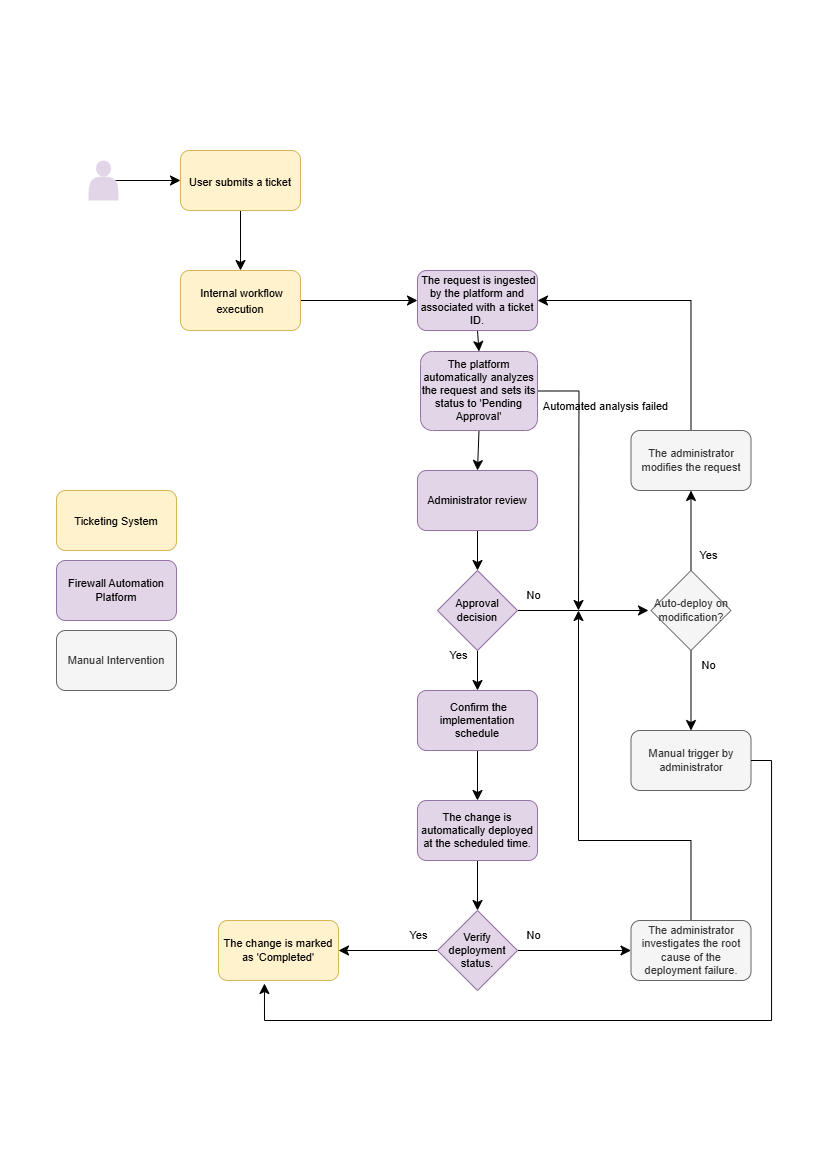

Banking network operations face complex challenges including high-volume transaction processing, stringent compliance requirements, and sophisticated network architectures that demand effective troubleshooting and policy management:
Banking networks handle massive transaction volumes, making monitoring and troubleshooting increasingly complex. Timely identification and resolution of potential failures, bottlenecks, and performance issues are critical for maintaining network reliability and business continuity.
The banking industry faces strict regulatory and supervisory requirements. Ensuring network operations comply with these mandates and demonstrating compliance through comprehensive auditing and reporting is a complex undertaking.
Banks typically operate large-scale distributed network architectures spanning multiple branch offices and data centers. This complexity makes network configuration and troubleshooting challenging, increasing the intricacy of network management and maintenance operations.
Extensive network policies and configurations designed to protect against unauthorized access and attacks can become unwieldy. Large policy volumes often lead to management and audit difficulties, potentially creating vulnerabilities and security risks.
iNet's distributed access control functionality supports rational authority allocation within banking network architectures, accelerating business processes while ensuring risk control. The iNet platform helps users achieve efficient and secure network operations.
iNet's policy optimization module intelligently detects redundant policies, conflicting policies, and mergeable policies. It provides intelligent consolidation recommendations to reduce policy volume, preventing resource waste and performance degradation while minimizing potential conflict risks. The system also supports optimization analysis of existing device configurations through detection of unused, expired objects and policies, as well as shadow policies, enabling one-click reclamation functionality to clean up redundant configurations and improve resource utilization and performance.
Targeting banking network architectures, iNet supports distributed access control by implementing hierarchical management between headquarters and branch offices. Through rational allocation of decision-making authority, branch offices can respond more rapidly to local market demands and customer requirements, reducing headquarters-level decision times. Branches can make flexible decisions based on local conditions, accelerating business advancement. Simultaneously, headquarters can monitor branch operations and conduct security audits to ensure network changes are coordinated when necessary and risk control is maintained.

Deeply customized for industry characteristics and specific business scenarios, delivering a comprehensive one-stop solution
iNet's policy optimization module intelligently detects redundant, conflicting, and mergeable policies while providing consolidation recommendations. This reduces policy volume, prevents resource waste and performance degradation. Through one-click reclamation functionality, the system helps enterprises clean up redundant device configurations, improving resource utilization and performance.
iNet supports distributed access control with rational authority allocation between headquarters and branch offices. By delegating decision-making authority to branches, organizations can respond more quickly to local market demands and customer requirements, reducing headquarters-level decision times. Branches can make flexible decisions based on local conditions, accelerating business advancement.
Within the distributed access control framework, headquarters can monitor branch operations and conduct security audits. This ensures all branch network changes remain under headquarters oversight. Headquarters can coordinate and adjust branch decisions while maintaining risk control, guaranteeing network security and compliance while preventing potential risks and vulnerabilities.
Through policy optimization and distributed access control, users can better manage network resources and configurations, improving resource utilization and performance. Reduced policy volume, cleaned redundant configurations, and rapid decision response capabilities enhance network operations efficiency while reducing operational costs and increasing business revenue.